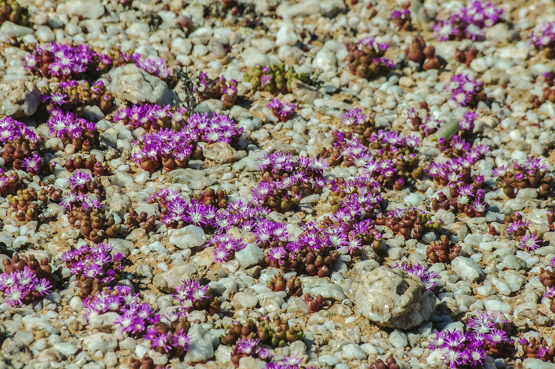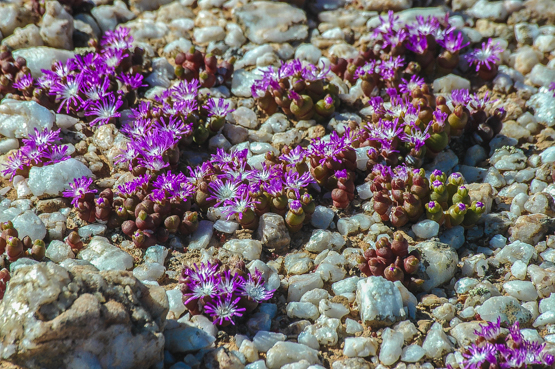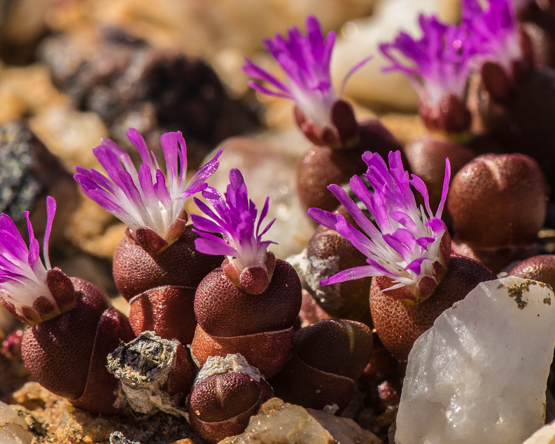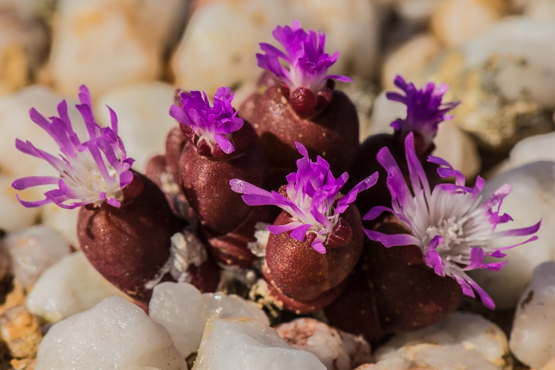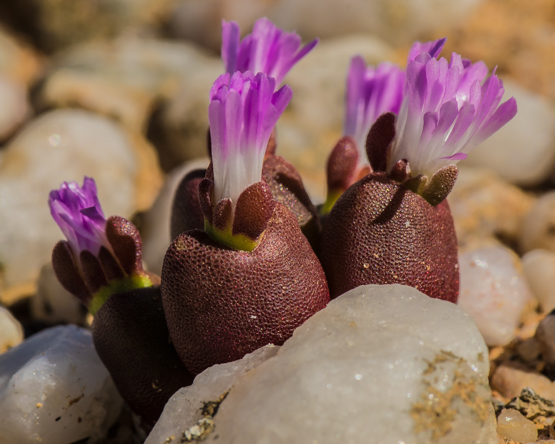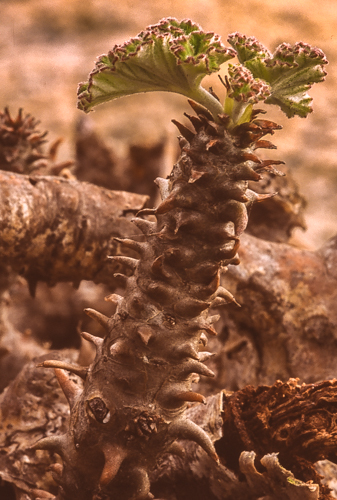


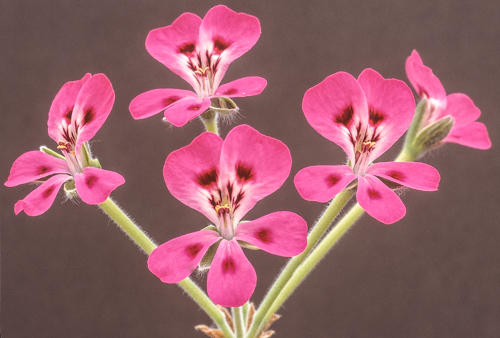






The specific name echinatus means prickly or armed with spines or prickles and is derived from the word echinus (hedgehog).
When you look at the recurved thorny stipules on the stems, it is easy to see where the name comes from.
The plants may be up to 60 cm tall, but are usually much smaller; they have few to many branches, with leaves 2-3 cm long and 3-4 cm broad on relatively long stalks.
The flowers are about 3 cm in diameter and appear from July to November in groups of 3-8. They vary in colour from white and pink to brilliant purple, with darker blotches.
This beautiful and interesting species occurs from the Richtersveld to Clanwilliam,
usually on dry granite or sandstone slopes and protected by bushes or overhanging rocks.
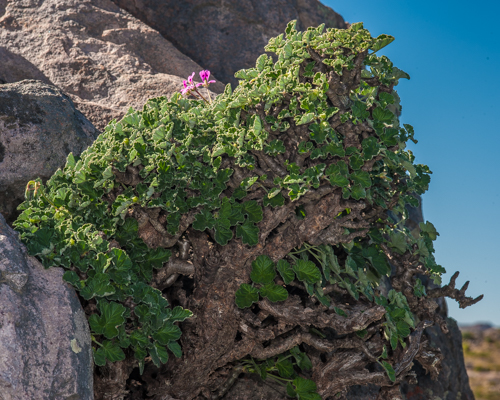
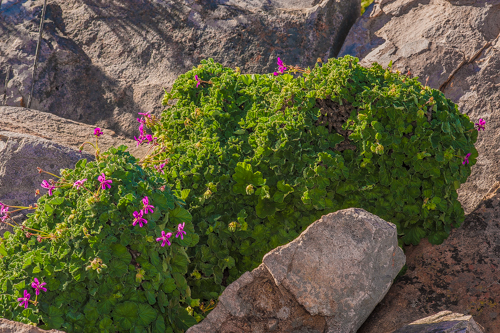
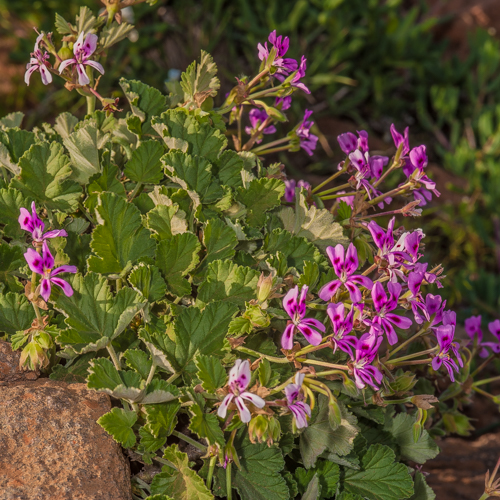
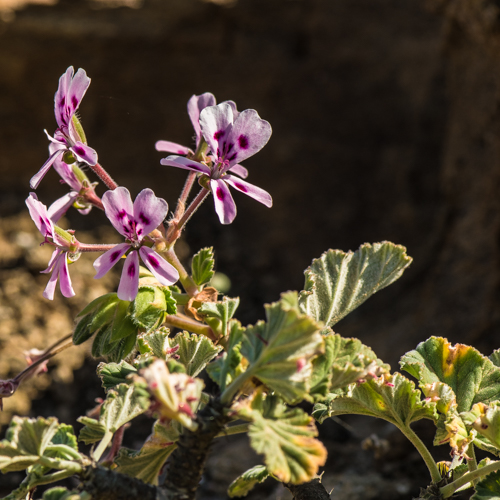
Uncarina is a genus of 12 species occurring in northern, western and southwestern Madagascar.
U. stellulilifera is common between limestone rocks in the Tulear region, between Morondava in the north and Lake Tsimanampetsotse in the south.
It is a small tree up to 3.5 m tall, with a thickened base and leaves 4-12 cm long and 3-10 cm wide. The beautiful flowers are 5-6 cm long.
The fruits are most peculiar with their very long barbed spines, which attach them to passing animals as an aid in dispersal. We were told that the local people use the fruits to catch mice.
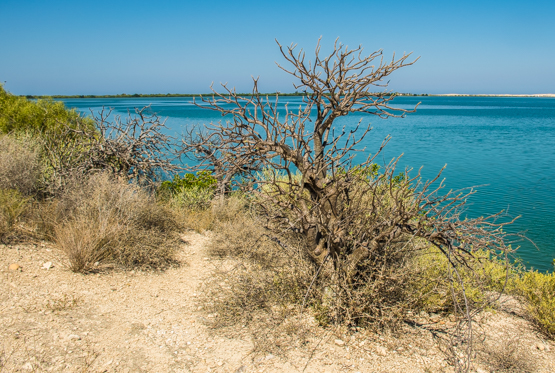
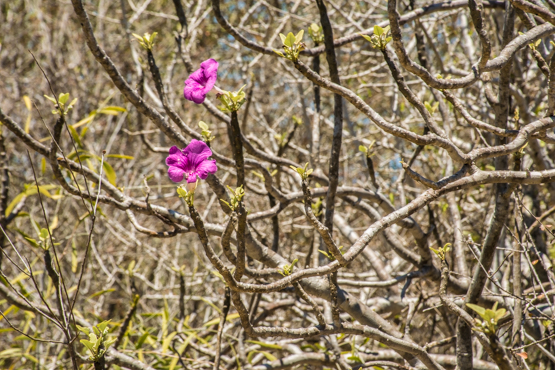

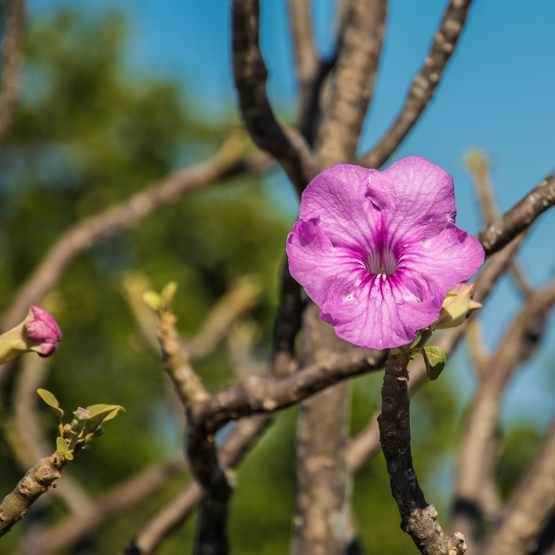

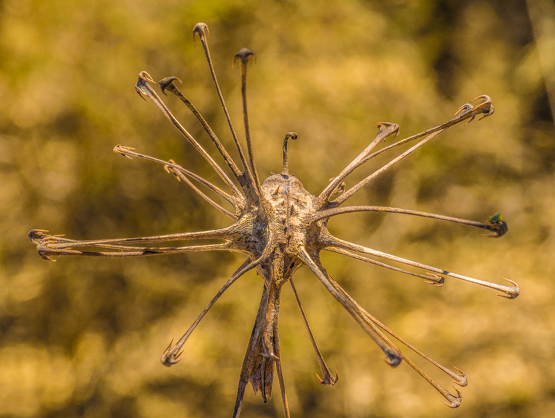
Hamata means hooked, an apt specific name for this species with its recurved tubercles.
The plants often form dense, much-branched clumps up to about 50 cm tall and 60 cm or more in diameter with a thickened main stem.
The flowers (cyathia really) are surrounded by green or yellowish to red bracts and appear from April to September.
One can find this species from Luederitz in southern Namibia to SE of Worcester in the Western Cape, usually on stony slopes.
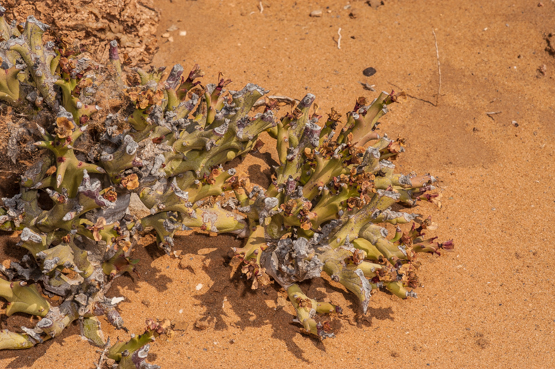

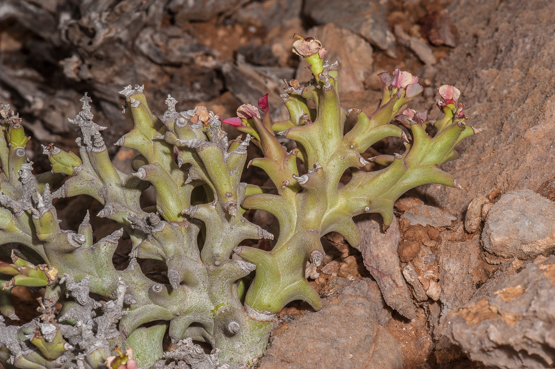
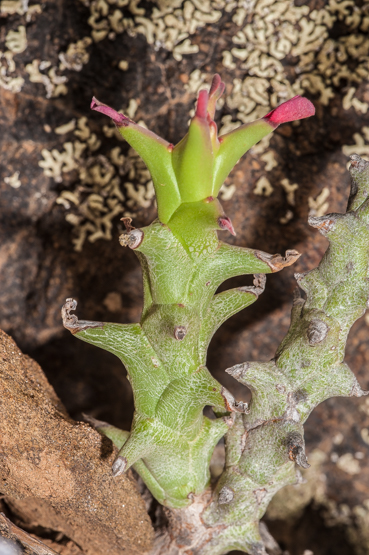
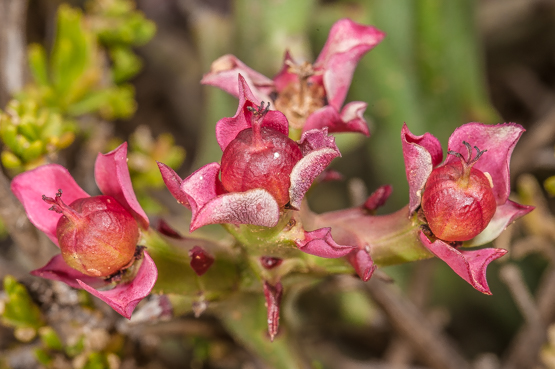
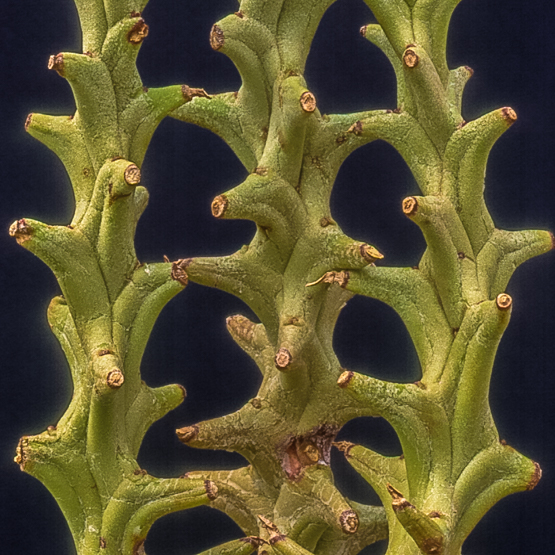
On seeing this species for the first time, one would be excused for mistaking it for an Antegibbaeum. It was first described as a Ruschia, but in 2003 a new genus was established just for this one species. Since then, two more species have been added. If you are interested in the whole complicated story, you should read A Gordion knot in Ruschioideae by H. Hartmann and I. Niesler in Bradleya 30/2012, p. 33-60.
The plants form dense mats 7-10 cm high with persistent leaves 5 to 6 cm long and 0.7-0.8 cm wide.
They flower in June-August; the flowers have long stalks (to 5 cm long), are to 3.5 cm in diameter and open for only a few hours in the afternoon. After pollination they turn into
tumble fruits.
Although the species grows only in the Robertson, Swellendam and Worcester districts of the western Cape, it is locally abundant there, usually in full sun on gentle shale slopes, at an altitude of 200-250 m. In this area most of the rainfall occurs in winter.
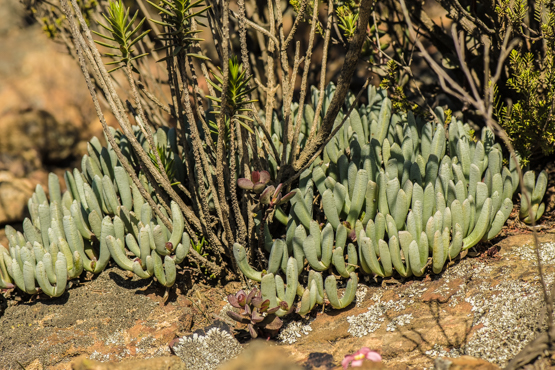
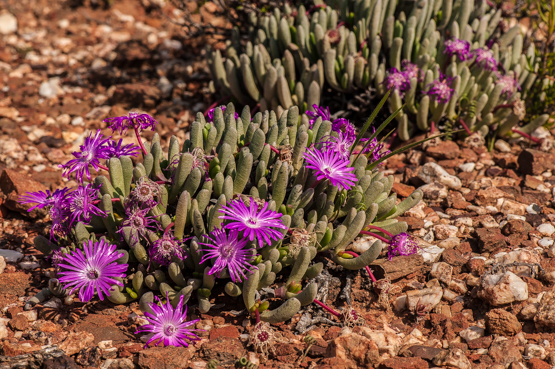
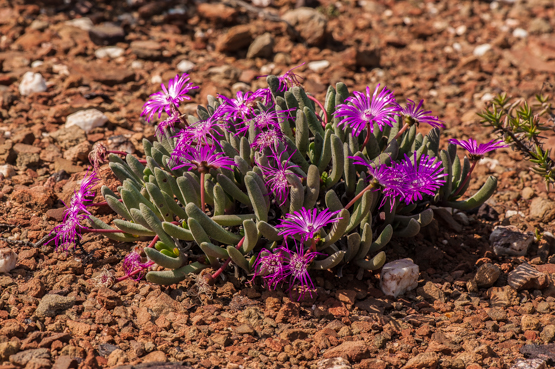

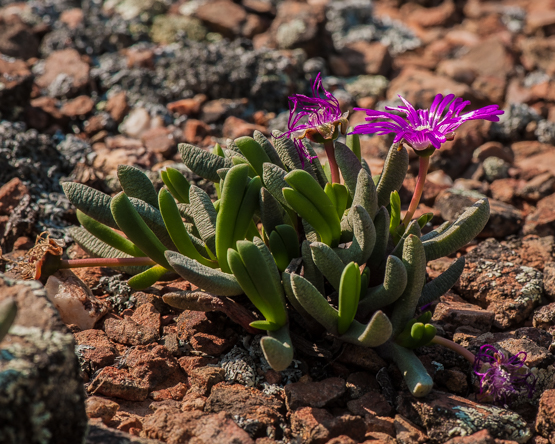
Because of the peculiar orientation of its leaves, this species is often called Vertical Leaf Senecio or propeller plant.
The plants have creeping to erect stems, to 80 cm tall and much-branched.
The vertically flattened leaves* are variable in shape, size and colour, to 10 cm long, 3 cm wide and 3-5 mm thick.
Inflorescences are to a meter tall.
The species is widespread in central and southern Madagascar, where it grows on denuded granite rocks, often together with members of the Euphorbia milii groep, such as E. horombensis and E. fianarantsoae and Pachypodium species (first picture shows P. horombense in foreground).
* This vertical compression of the leaves is usually regarded as an adaptation which reduces the amount of light that reaches the leaf surface, resulting in lower daily water loss than in leaves in other orientations.

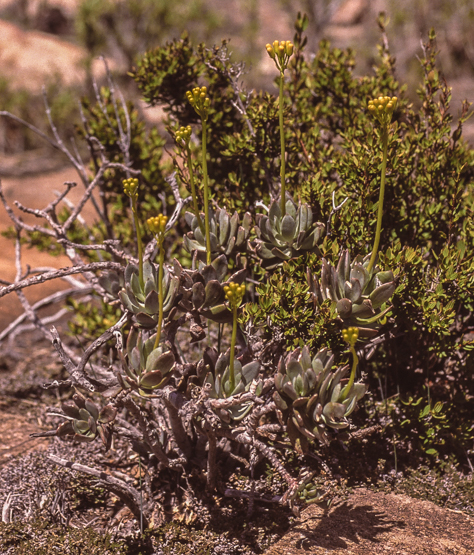

Pictures 3 and 4 show plants in cultivation (scans of old slides)
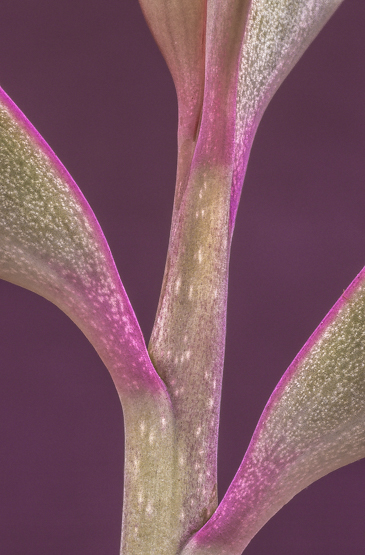
At the end of our latest trip to Madagascar, we stayed in Antsirabe, south of the capital Antananarivo. The area is well known for its succulents and I decided to spend an afternoon in the mountains surrounding the town. For several kilometers the road leading out of town ran through the middle of a wide valley, and what I could see of the mountain slopes did not look promising at all. At a certain moment we decide to take a little side road that seemed to take us out of the valley. This was indeed the case, but even the hillsides appeared to be cultivated.
When the driver asked talked some local people if there were any bare rocks nearby, he got a positive reply, but in spite of their directions no rocks came into view. At a loss what to do now, I decided to just stop at an uncultivated spot and look around.
Picture #1 shows the first plant that I noticed there. Without flowers it could be about anything, but next to it was a group of flowering plants (#2) and immediately the penny dropped.
With a large tuber 10-15 cm long and to 7 cm thick, Euph. primulifolia is a true geophyte. It has a very short stem, hidden in the ground, with a radial rosette of 4-12 leaves. In the dry season the plants are leafless and hidden in the grass; in other words, they are only visible in the rainy season. This growth form allows the plants to survive the yearly grass burning.
The leaves are flat or undulate, 8-11 cm long and 3-4 cm wide.
Usually the plants flower before the leaves appear, but as the pictures show, this was not the case here. The cyatophylls* vary from white or greenish to pink and violet.
This variable species is widespread in the central highlands at about 1400-1500 m in a variety of substrates.
* cyatophylls are the bracts that surround the inflorescence proper in many members of the Euphorbiaceae.
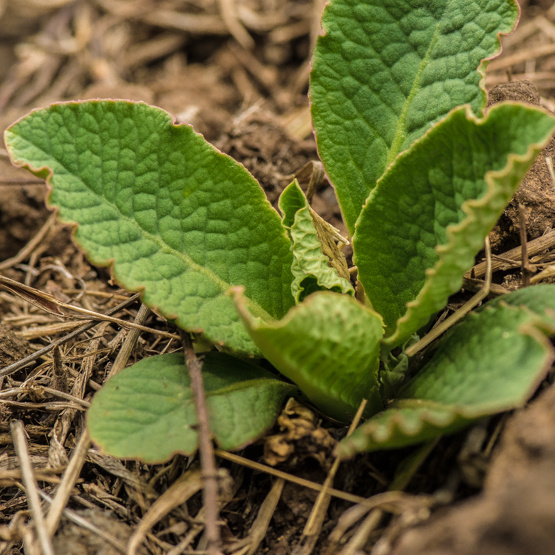


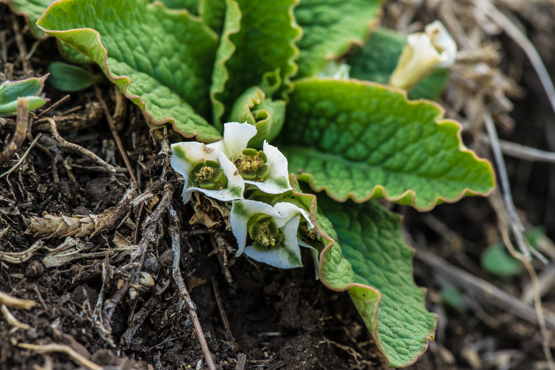
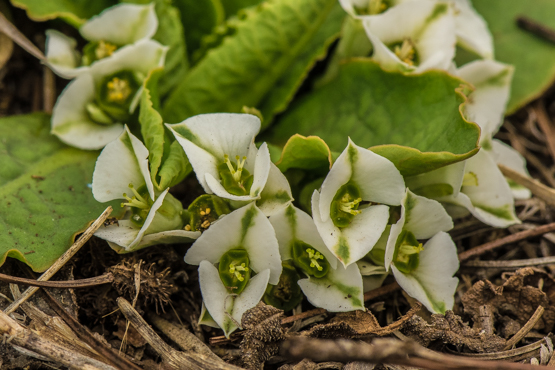

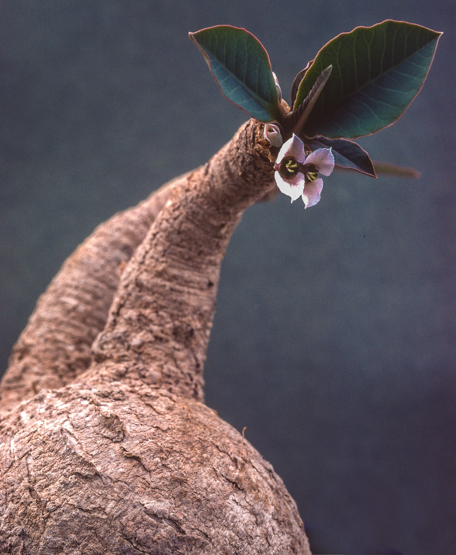
Plant in cultivation. Scanned slide.
Because this species is often more or less climbing in surrounding shrubs, it is difficult to spot when not in flower. The name refers to the very narrow leaves, which are up to 13 cm long, but not more than 1 cm wide.
The plants become up to 1.5 m tall and produce brilliant red flowers with a tube just over 1 cm long.
One can find the plants in a wide strip roughly following the coast of southern Madagascar from Fort Dauphin to Tulear, where they mainly grow in xerophytic bush on limestone rocks.
The photos were taken at Madagascar’s southernmost tip (Cap Ste Marie) on 2 Nov. 2016.
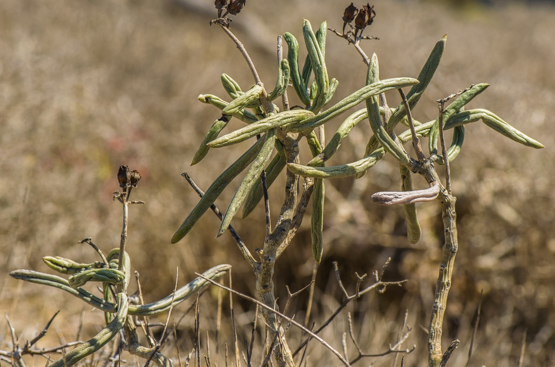

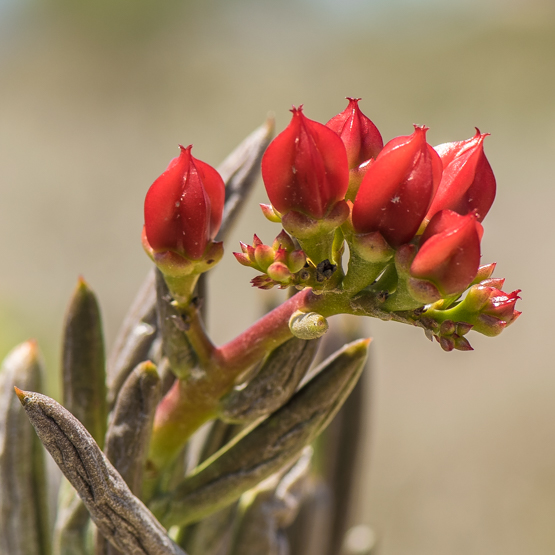
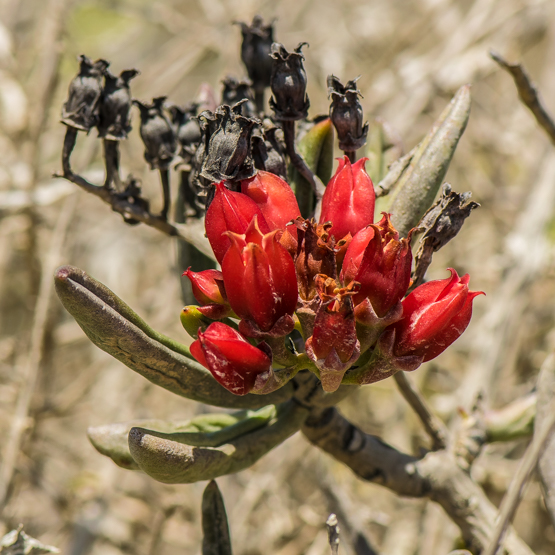
Earlier this week I returned from my latest trip to Madagacar, and what a trip it was. Full of unexpected things, both positive and negative.
Over time, quite a few pictures from the visit should find their way to this blog; the ones below are just meant to wet your appetites.

Near St. Augustin
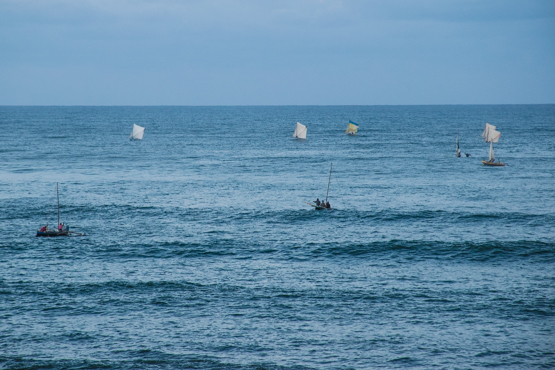
Fishing boats going out to sea at day break
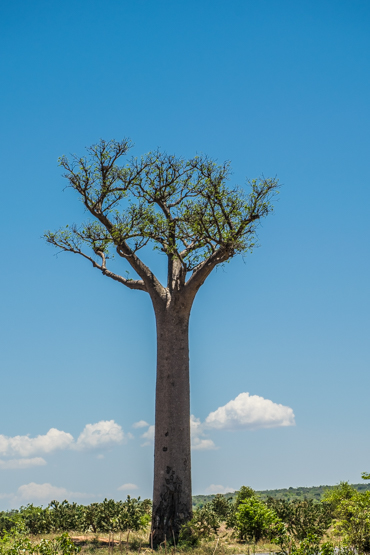
Adansonia za
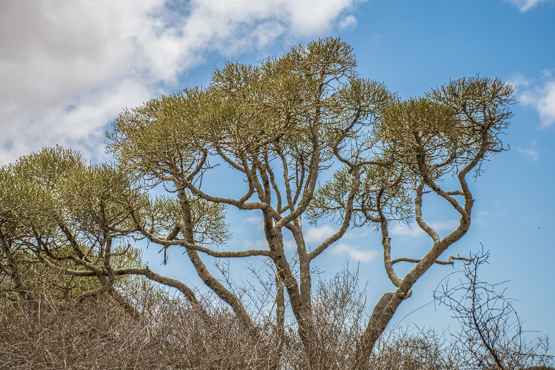
Euphorbia tirucallii

Euph. capsaintemariensis

Operculicarya decaryi

Kalanchoe beharensis
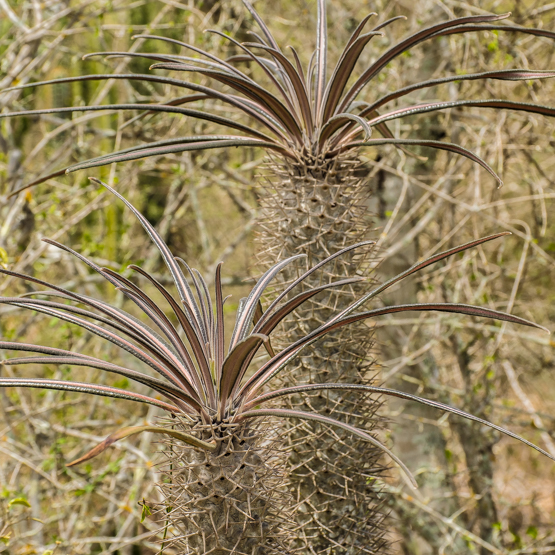
Pachypodium geayi

Pach. horombense
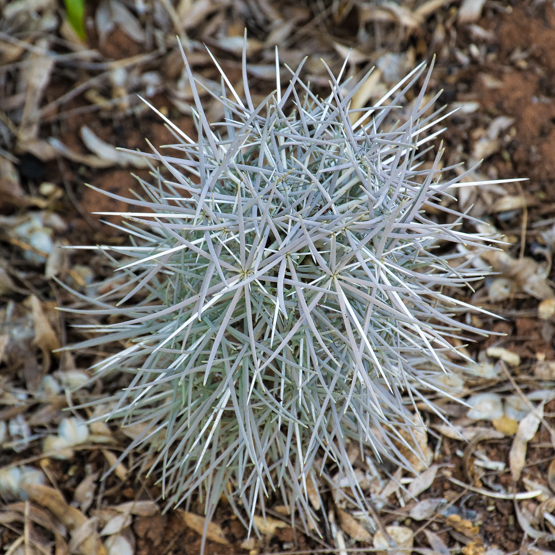
Didierea madagascariensis
Old plants of this species form clumps with up to 20 egg-shaped (=oviform) bodies, which are 1-2 cm tall and 1-3 cm in diameter.
Especially when flowering, the very dense stands in which they grow present an unbelievable show. The white to rose-pink flowers appear in August-September.
The plants occur on quartzitic flats and slopes in the southern Knersvlakte, where the rainfall is on average about 125 mm per year (mainly in winter).
